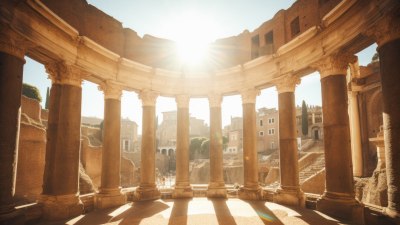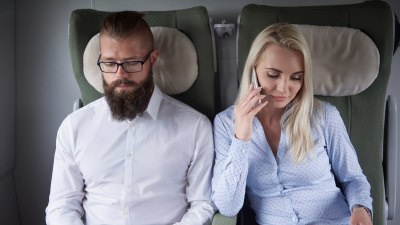Why Some of the Most Fascinating Historical Sites Aren’t on Any Tourist Map
Discover the hidden historical sites that remain off the beaten path yet are rich in culture and stories.

When it comes to travel, many people rely on tourist maps and guidebooks to navigate their adventures. However, some of the most fascinating historical sites aren't highlighted on these conventional maps. These hidden gems offer rich stories and cultural experiences that can captivate a traveler’s imagination. In this article, we will explore fascinating places that many tourists might overlook, the reasons behind their obscurity, and the significance they hold within their respective regions.
Understanding Why Some Sites are Overlooked
The world is dotted with numerous historical sites, yet not all of them attract the attention of the masses. There are several reasons why some sites remain off tourist maps. One primary factor is accessibility. Remote locations or places that are challenging to reach often deter tourists, resulting in these sites being left undisturbed. Economic factors also play a significant role. Many of these locations lack the funding necessary for marketing and preservation efforts, making them invisible in the competitive travel landscape.
Pristine Ruins: The Forgotten Cities
Many forgotten cities hold the key to understanding ancient civilizations. A prime example is the ruins of Pompeii, which, despite its fame, are only a fragment of what lies beneath the ground across Italy. However, cities that are lesser-known, like Civita di Bagnoregio, often escape attention. This hilltop town, perched on a plateau in the Italian countryside, is slowly eroding away but offers stunning views, a glimpse into medieval architecture, and tranquil streets devoid of heavy tourism. Similarly, the ancient city of Teotihuacan near Mexico City, while popular, has countless lesser-known ruins in surrounding areas deserving of exploration.
Local Histories and Folklore
Many small towns harbor rich local histories that are often overlooked. These places might not have grand monuments or archaeological significance, but their folklore and traditions convey unique cultural identities. Take the village of Ollantaytambo in Peru; though often overshadowed by the more famous Machu Picchu, it holds histories that include Incan religious practices and agricultural innovations. Sometimes, tourist maps highlight only the well-known attractions, neglecting the quieter narratives that shape the essence of these communities.
Alternative Pilgrimages
In various countries, alternative pilgrimage routes lead to sites of historical significance that have become obscured by more popular paths. For example, in Spain, the Camino de Santiago, although well-known, is just one of many pilgrimage routes. The Northern Way, leading to the same destination of Santiago de Compostela, winds through less-traveled landscapes and historic towns that tell rich tales of individual communities. Travelers seeking a deeper connection often come away with more profound and personal insights when they take these alternative routes.
The Role of Preservation in Hidden Sites
Some historical sites exist in a delicate balance between preservation and accessibility. Often, the places most in need of money and support for upkeep are also the least visited. Sites like the Hellenistic city of Ephesus in Turkey have undergone extensive restoration efforts, drawing large crowds, while other sites remain in ruins due to lack of funding. For instance, the Acropolis of Athens may be flooded with tourists, while the nearby ancient city of Sicyon, with its fascinating history and minimal tourist presence, remains in a battle against time and nature.
Myth and Mystery
Many fascinating historical locations are steeped in myth and mystery, which adds an extra layer of allure. Take the ancient ceremonial site of Göbekli Tepe in Turkey, believed to be over 11,000 years old, predating Stonehenge. This site raises questions about early human civilization and religious practices. However, it remains relatively unnoticed compared to more modern attractions. Similarly, sites like Tintagel Castle in Cornwall carry legendary associations with King Arthur but often get overshadowed by more accessible castles nearby.
Community-Driven Discoveries
Community members often know the hidden treasures within their regions. Local guides can unveil stories and sites that aren’t detailed in mainstream travel publications. The charming towns in the Northern Rockies, for instance, feature historical sites that tell the story of Indigenous peoples, miners, and early settlers. Engaging with local historians or taking part in guided tours can reveal the lesser-known aspects of a site’s history, expanding travelers’ appreciation for both the landscape and its past.
Historical Anomaly: The Black Hills
The Black Hills of South Dakota, sacred to the Lakota Sioux, are often overlooked by tourists seeking the more famous Mount Rushmore. However, the Hills are teeming with historical relevance, indigenous culture, and hidden sites like the historic town of Deadwood. Here, the stories of Wild West lawmen and outlaws are still alive, yet many visitors miss out on the lessons of indigenous tribal histories. The contrasts, tensions, and legacies echo throughout the land itself, revealing how the past continues to influence the present.
Art, Education, and Accessibility
Arts and education initiatives often play a pivotal role in bringing attention to overlooked historical sites. Programs led by universities and local organizations work to engage the community and raise awareness of unrecognized locations. Art installations, educational workshops, and public heritage projects can help reveal the deep connections many have with their cultural past. These initiatives transform the stories of hidden gems into a vital part of contemporary discussions about heritage and identity.
Rediscovering Historical Footprints
Travelers willing to step beyond the typical tourist routes can uncover fascinating stories that history books may not cover. Unique events, festivals, and activities held in hidden historical sites often attract only a local audience but can offer immersive experiences for visitors. For example, community gatherings celebrating local traditions and crafts provide an opportunity for travelers to immerse themselves in authentic cultural exchanges. Therefore, being open to discovering these sites allows one to form more meaningful connections with the places visited.
The Benefits of Exploring Hidden Historical Sites
Traveling to lesser-known historical sites can provide several benefits. Firstly, it promotes sustainable tourism by distributing visitor numbers more evenly across a region, reducing the impact on highly trafficked areas. Secondly, engaging with smaller communities fosters a greater appreciation for local cultures and their histories, promoting respect and understanding among diverse populations. Finally, travelers often find a sense of serenity and reflection while exploring these quieter places, leading to a more enriching journey.
Preserving the Legacy
As travelers seek out hidden historical sites, preservation becomes essential. Advocating for the recognition and support of these places ensures their survival for future generations. Numerous organizations focus on conservation efforts worldwide, working to protect both well-known and obscure histories. Collaboration between local communities and tourists can create a balanced approach to enjoying and honoring the past. By prioritizing preservation, we can ensure that these hidden gems remain alive with stories, capturing the imagination of those who venture into the less-charted territory.
The Call to Adventure
In conclusion, while tourist maps highlight certain famous sites, some of the most fascinating historical locations remain hidden. Understanding why these places are overlooked can inspire travelers to embark on adventures beyond the normal confines of their guides. As we continue to explore the world, let us cherish and preserve the stories waiting to be told in the shadows of larger attractions. Ultimately, the call to adventure often lies in the silent whispers of the past, waiting just off the beaten path.











